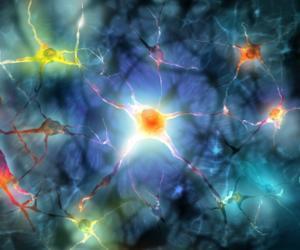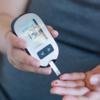Diabetes Insipidus: Knowing the Signs and Symptoms

Diabetes can take many forms, including diabetes insipidus. Diabetes insipidis a rare form of diabetes that is largely unknown to the public. This form is said to affect one out of every 25,000 people diagnosed with diabetes, but it differs significantly from diabetes mellitus, which includes both type 1 and 2.
Diabetes insipidus has even earned a nickname: The water diabetes. It earned this nickname mainly because the patient with it would urinate frequently and heavily. While patients experience symptoms similar to diabetes mellitus, they do not experience high blood glucose levels.
We have outlined all the differences between diabetes insipidus and mellitus that you need to know. Though this form is extremely rare, it can have adverse side effects if left untreated.
The difference between diabetes insipidus and diabetes mellitus
One of the distinguishing factors between diabetes insipidus and the other forms of diabetes is how the patient’s insulin function is affected. This is not the case with diabetes insipidus. For other forms of diabetes, this resistance to insulin (or low levels, as well as non-existence of insulin) is experienced in the pancreas.
A patient diagnosed with diabetes insipidus is affected in their kidneys and/or pituitary gland, where a defect in either region occurs. Another distinguishing factor between diabetes insipidus and type 1 and 2 diabetes has to do with how the different conditions earned their names.
‘Insipidus’ in diabetes insipidus has a Latin root that translates to the word tasteless. This is used to describe the urination of the affected patient, who will pass urine that is characterized as low in its amount of sodium, as well as being both odorless and diluted. As for both type 1 and 2 diabetes, these sets of conditions take on the Latin phrase “diabetes mellitus.” Mellitus is used to characterize the urine of type 1 and 2 diabetes patients as sweet and high in sugar.
Another interesting thing to note between diabetes insipidus and diabetes mellitus is that both conditions are not related. They do, however, share many of the same symptoms. Some of these similar characteristics can include the increase in thirst, as well as the constant need to urinate. Patients diagnosed with diabetes insipidus do not experience high levels of glucose, or sugar, in their blood like patients with type 1 and 2 diabetes do. The primary problem that is associated with diabetes insipidus is that the patient’s kidneys are not able to properly manage the fluid within their body.
What is diabetes insipidus?
One of the main traits of diabetes insipidus includes a patient’s frequent need to urinate. Patients will also be constantly thirsty. With these two primary symptoms, subsequent effects can be seen that impact a patient’s daily life, which can include a disruption in their routine.
Diabetes insipidus is believed to be caused by a patient’s genetics and stems from what is known in the medical world as hereditary polyuria. Hereditary polyuria consists of a condition where an abnormal quantity of urine develops within a patient’s body, in addition to an increase in thirst (this increase in thirst is also known as polydipsia). The primary catalyst of the disease includes the lack of antidiuretic or vasopressin hormones in the body. Vasopressin is a type of peptide (a compound that consists of two or more amino acids connected in a series) that is developed in the hypothalamus. The lack of vasopressin present in the kidneys serves as the primary complication of diabetes insipidus.
To better understand this, it is necessary to understand how vasopressin functions within the kidneys. First off, the kidneys are responsible for filtering large sums of blood, which produces a corresponding amount of urine. The urine contains additional fluid that is subsequently treated as waste within the body’s system, following the cleansing of the blood.
After the production of urine, the fluid makes its way to the ureters. This results in the balancing of fluids that enable the flushing out of any extra fluid found in the blood. Urination, as well as liquid intake (i.e. drinking water), are both necessary in maintaining the balance of these fluids within the body. What is most important to understand is that vasopressin plays the role of communicating with the kidneys what the necessary fluid intake should be. Without the proper functioning of this hormone, the body experiences a fluid imbalance.
The future for patients diagnosed with diabetes insipidus
For patients who may be more susceptible to developing some form of diabetes, it’s important to understand both the risk factors and the signs and symptoms of the different disease types. With this knowledge, patients can better assess their own condition and even decrease the likelihood that they develop diabetes (unless the condition is genetic). The symptoms can often include severe dehydration, dry skin, dizziness, and nausea, and can lead to other complications like permanent brain damage, seizures, and even death. It is also common for patients to experience electrolyte imbalance, namely electrolytes such as potassium and sodium, which are vital in the contraction of the muscles that regulate heartbeat. Electrolytes are also seen in other forms, such as sweat, urine, and blood. The imbalance of these electrolytes can subsequently result in other serious complications, like headaches, anxiety, muscle spasms, and fatigue.
Identifying any combination of these symptoms is important, as a visit to a doctor’s office should then be made. While there, a medical professional may better be able to distinguish between the different potential conditions a patient may have. This can be a bit challenging, because of the symptoms of the different types of diabetes (and other severe conditions for that matter) that overlap each other.
Maintaining a healthy lifestyle can be one of the most beneficial actions taken by patients to ensure a much healthier, well-lived life.
















